10 Healthy Alternatives to Microwave Cooking for a Non-Toxic Kitchen
Introduction
Have you ever paused to wonder what’s really happening inside your microwave? I certainly have. While it’s a kitchen staple for many, my journey towards a healthier lifestyle led me to question its safety and efficiency. Concerns about radiation, nutrient loss, and taste degradation have sparked a growing interest in alternatives. As we strive for a more sustainable way of living, the quest for non-toxic cooking methods feels more relevant than ever.
In this article, I’ll share ten innovative alternatives to microwave cooking that I’ve personally explored. From the reliability of conventional ovens to the eco-friendly promise of solar ovens, these methods not only offer a safer cooking experience but also enhance the flavor and texture of your meals. Let’s transform our kitchens into non-toxic havens together, embracing a fresh perspective on everyday cooking.
Why Consider Microwave Alternatives?
Exploring alternatives to microwave cooking opens up a world of healthier and more sustainable options. Each method offers unique benefits, from preserving nutrients to enhancing flavors, all while being kinder to the planet. Let’s delve into why these alternatives might just be the change you’re seeking.
Health and Safety Concerns
Choosing alternatives to microwave cooking can significantly reduce health risks. I’ve personally found that using safer cooking methods helps avoid the migration of harmful chemicals from containers into food. Microwaving can sometimes lead to nutrient loss and even the creation of carcinogens. For instance, I learned that it can degrade Vitamin B12 in foods like meat, fish, and eggs, which are vital for nerve and red blood cell health. By opting for these alternatives, we can better safeguard our well-being.
Nutrient Retention and Food Quality
When it comes to preserving nutritional value, methods like steaming, air frying, and convection ovens have been game-changers for me. These techniques help retain more vitamins and minerals, ensuring meals are both delicious and nutritious. Traditional cooking methods often excel in maintaining nutrient integrity compared to microwaving, which can strip food of essential nutrients. Embracing these alternatives means enjoying meals that are flavorful and packed with goodness.
Taste and Texture Preferences
Microwaves often compromise the taste and texture of food, leaving it less appetizing. I’ve found that traditional methods like baking, roasting, and stovetop cooking enhance flavor and texture, making dishes more enjoyable. These methods allow for caramelization and browning, contributing to a richer taste profile. By exploring these alternatives, you can elevate your culinary experience and savor meals that are both satisfying and delicious.
Energy Efficiency and Environmental Impact
Some microwave alternatives, such as solar ovens and induction cooktops, offer greater energy efficiency and are more environmentally friendly. These methods reduce energy consumption, helping to lower your carbon footprint while still delivering excellent cooking results. When selecting cooking methods, it’s essential to consider both energy consumption and environmental impact. By choosing eco-friendly alternatives, you contribute to a healthier planet while enjoying efficient cooking.
Conventional Ovens: A Reliable Microwave Substitute
Conventional ovens are a steadfast alternative to microwaves, offering benefits that delight culinary enthusiasts and those seeking healthier cooking methods. Unlike microwaves, conventional ovens provide even heating, ensuring food is cooked thoroughly and uniformly. This is especially beneficial for dishes requiring precise temperature control to achieve the perfect texture and flavor.
One of the joys of using a conventional oven is the ability to brown the surface of foods, enhancing both the visual appeal and taste. For family gatherings or meal prepping, conventional ovens excel at preparing large quantities of food. The enhanced texture and flavor achieved often surpass what a microwave can offer, making meals more satisfying.
However, conventional ovens do have their challenges. They usually require longer cooking times compared to microwaves, which might be a hurdle for those with busy schedules. Preheating is another necessary step, adding to the overall cooking time. Additionally, conventional ovens are generally less energy-efficient than some modern alternatives, such as air fryers or induction cooktops. This might be a consideration for those who are environmentally conscious.
Best Dishes for Conventional Ovens
Conventional ovens shine when it comes to cooking a variety of dishes that benefit from even heat distribution and enhanced flavors. Baking is a beloved use, allowing for the creation of perfectly risen cakes, cookies, and bread. Roasting vegetables brings out their natural sweetness and creates a delightful caramelized exterior.
Casseroles, with their layers of ingredients, cook evenly and develop a rich, melded flavor profile. Dishes with broth or sauce, such as lasagna or baked pasta, benefit from the oven’s ability to maintain a consistent temperature, ensuring the dish is cooked to perfection without drying out. These capabilities make conventional ovens a versatile and reliable choice for exploring alternatives to microwave cooking.
Convection Ovens: A Faster, Even Cooking Alternative
Convection ovens stand out as a remarkable option for those exploring alternatives to microwaves. They promise efficiency and quality, making them a compelling choice for modern kitchens.
How Convection Ovens Work
Convection ovens have become a favorite in my kitchen, and for good reason. They circulate hot air using a fan, ensuring that every inch of your food receives consistent heat. This method not only speeds up cooking times but also eliminates those pesky hot spots. Imagine baking a pie where every slice is perfectly browned and deliciously even. That’s the magic of convection ovens, especially when you’re into baking or roasting.
Advantages and Disadvantages
There are several perks to using convection ovens as an alternative to microwaves. First, they cook faster and more evenly, which means your meals retain their intended flavors and textures. This is particularly important for dishes that demand precise temperature control. However, it’s worth noting that convection ovens can be a bit pricier than traditional ones. Plus, you might need to tweak your recipes to adapt to their unique cooking style. But trust me, once you get the hang of it, the benefits—like enhanced food quality—are well worth the investment.
Suitable Dishes for Convection Ovens
Convection ovens are versatile, making them an excellent alternative to microwaves for a range of dishes. They shine when roasting meats and vegetables, as the even heat distribution enhances both browning and flavor. If you’re a baking enthusiast like me, you’ll love how they handle pastries and bread, ensuring a perfect rise and texture. Whether you’re preparing a succulent roast chicken or a batch of homemade cookies, convection ovens offer the reliability and efficiency needed to create culinary delights.

Toaster Ovens: A Compact and Versatile Option
Toaster ovens present a wonderful alternative to microwaves, especially for those seeking efficiency and versatility in a compact form. This section explores their benefits, cooking options, and ideal dishes, providing insights into why they might be the perfect addition to your kitchen.
Benefits of Toaster Ovens
Toaster ovens have been a game-changer in my kitchen, offering a compact solution without sacrificing functionality. Their small size is perfect for those of us with limited counter space, yet they still manage to handle a variety of cooking tasks. Unlike conventional ovens, toaster ovens heat up quickly, saving precious time during busy days. Despite their speed, they consistently deliver quality results, making them a practical choice for any home.
Cooking Options and Energy Efficiency
The versatility of toaster ovens is truly remarkable. They can toast, bake, and reheat with ease, making them a reliable kitchen companion. One of my favorite aspects is their energy efficiency. Compared to full-sized ovens, they require significantly less power, which translates to lower energy bills and a smaller carbon footprint. This makes them an eco-friendly choice for anyone looking to make sustainable changes in their home. Whether you’re baking a small batch of cookies or reheating leftovers, toaster ovens offer a dependable and energy-conscious solution.
Ideal Dishes for Toaster Ovens
Toaster ovens shine when it comes to preparing small batches of baked goods like muffins or cookies, eliminating the need to heat a large oven. They’re also fantastic for reheating pizza, achieving that crispy crust that microwaves often miss. For breakfast lovers, their ability to toast bread to perfection is a daily delight. With such versatility, toaster ovens cater to a wide range of culinary needs, providing a convenient and effective alternative to traditional microwaving methods.
Stovetops: A Return to Traditional Cooking Methods
Stovetops offer a delightful journey back to traditional cooking, providing an array of techniques that enhance both flavor and texture. In this section, we’ll explore the differences between gas and induction stovetops, share effective cooking tips, and highlight the best foods for stovetop heating.
Gas vs. Induction Stovetops
Stovetops are a classic alternative to microwaves, offering a range of cooking techniques that enhance flavor and texture. Gas stovetops are favored for their precise heat control, allowing cooks to adjust the flame to suit various cooking needs. This precision is particularly beneficial for delicate tasks like simmering sauces or searing meats. On the other hand, induction stovetops are celebrated for their energy efficiency and rapid heating capabilities. They use electromagnetic technology to heat pots and pans directly, making them a fast and eco-friendly choice. Both options provide unique advantages, catering to different cooking preferences and environmental considerations.
Tips for Effective Stovetop Cooking
Mastering stovetop cooking involves a few key techniques to ensure delicious results. Using a lid is essential for retaining heat and moisture, which speeds up cooking and enhances flavors. It’s important to avoid high flames that can lead to uneven cooking and potential burning. Instead, moderate heat allows for better control and consistency. Adding a splash of oil or water can prevent food from sticking, ensuring a smooth cooking process. These tips not only improve the quality of your meals but also make stovetop cooking a reliable alternative to microwaving.
Best Foods for Stovetop Heating
Stovetops excel in preparing a variety of dishes that benefit from direct heat. Stir fry is a popular choice, as the high heat and quick cooking time preserve the vibrant flavors and textures of vegetables and proteins. Boiling pasta is another stovetop staple, providing perfectly cooked noodles ready to pair with your favorite sauces. Reheating soups and stews on the stovetop ensures even warming and maintains the dish’s original taste and consistency. These methods showcase the versatility of stovetop cooking, making it an excellent alternative for those seeking to move away from microwave use.
Air Fryers: A Quick and Healthier Cooking Choice
How Air Fryers Operate
Air fryers have become a beloved alternative to microwaves, offering a healthier way to prepare meals. They work by circulating hot air around the food, creating a crispy texture with much less oil than traditional frying. This method not only cuts down on fat but also delivers a satisfying crunch often missing in microwave cooking. The rapid air technology ensures even and quick cooking, making air fryers a convenient option for maintaining a healthy lifestyle without sacrificing taste or texture.
Pros and Cons of Air Fryers
Air fryers bring several advantages, making them a compelling choice for those seeking microwave alternatives. A significant benefit is healthier cooking, as they require little to no oil, reducing calorie intake. They’re generally faster than conventional ovens and versatile in preparing a wide range of dishes. However, they do have some limitations. Most air fryers have limited capacity, which can be a drawback for larger families or gatherings. Additionally, some recipes may need adjustments to fit the unique cooking style of air fryers, which can be a learning curve for new users.
Dishes Best Suited for Air Fryers
Air fryers excel in preparing a variety of dishes, making them a versatile addition to any kitchen. They’re particularly effective for frying, grilling, and roasting, offering a healthier twist on traditionally oil-heavy meals. Foods like chicken wings, French fries, and roasted vegetables come out crispy and flavorful, rivaling their deep-fried counterparts. Plus, air fryers are excellent for reheating fried foods, restoring their original texture without making them soggy. This versatility makes air fryers a practical choice for those exploring alternatives to microwave cooking while maintaining the quality and taste of their meals.
Steamers: A Nutrient-Rich Cooking Solution
Steaming offers a wonderful alternative to microwaving, preserving both the nutrients and flavors of your food. This method not only supports a healthier lifestyle but also aligns with sustainable living practices. Below, you’ll find insights into the types of steamers available, their advantages, and the foods best suited for steaming.
Types of Steamers and Their Uses
Steaming has become my go-to method for cooking, and I love the variety of steamers that cater to different needs.
- Electric steamers bring convenience to the kitchen, especially with their multiple tiers. This feature allows me to cook several dishes at once, saving time without sacrificing flavor.
- Stovetop steamers are versatile and work seamlessly with the pots and pans I already have. They offer a traditional touch to my cooking routine, which I find comforting and familiar.
- Bamboo steamers are a delightful addition, particularly for Asian-inspired meals. They infuse a subtle, authentic flavor into dumplings and vegetables, making each meal feel special.
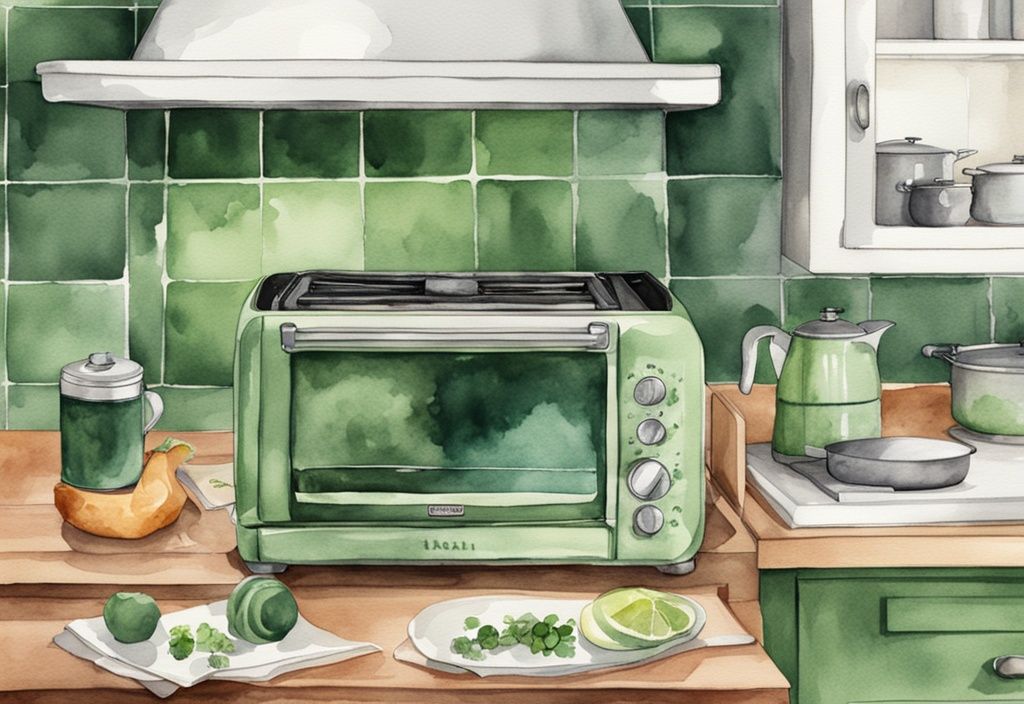
Each type of steamer brings its own unique benefits, fitting various cooking styles and preferences.
Advantages of Steaming Food
Steaming is a gentle method that truly honors the integrity of food. By using only water, it allows the natural taste and nutrients to shine through, unlike methods that rely on added fats or oils.
I find it especially beneficial for delicate foods, which retain their texture and nutritional value. Plus, steaming is energy-efficient, often requiring less time and energy than other cooking methods. This not only benefits my health but also supports my commitment to an eco-friendly lifestyle.
Foods Ideal for Steaming
Steaming transforms a variety of foods into delicious, wholesome meals.
- Vegetables maintain their vibrant colors and crisp textures, making them a joy to eat.
- Fish stays tender and moist, a perfect match for this cooking method.
- Dumplings, a favorite in many cuisines, achieve the ideal balance of softness and firmness when steamed.
- Rice becomes fluffy and light, complementing any dish beautifully.
Choosing steaming as a cooking method means enjoying a wide range of nutritious meals without compromising on taste or quality.
Slow Cookers: A Convenient Alternative for Flavorful Meals
Slow cookers have become my go-to alternative to microwaves, blending convenience with a delightful enhancement of flavors. These trusty kitchen companions work their magic over several hours, allowing ingredients to meld into rich, savory dishes that warm the soul. One of the things I love most about slow cooking is its energy efficiency. Compared to conventional ovens, slow cookers sip electricity, making them a wonderful choice for anyone keen on reducing their carbon footprint.
There’s something incredibly satisfying about the simplicity of using a slow cooker. Just toss in your ingredients, set the temperature, and let it work its magic. This hands-off method is a lifesaver for those of us juggling busy schedules but still craving the comfort of a home-cooked meal. Plus, slow cookers are fantastic at tenderizing tougher cuts of meat, turning them into succulent, flavorful delights.
Suitable Dishes for Slow Cookers
The versatility of slow cookers never ceases to amaze me. They’re perfect for crafting hearty stews and soups, where the extended cooking time allows each flavor to shine. Casseroles are another favorite, as the slow cooker ensures even cooking, keeping everything moist and delicious. For meat enthusiasts, slow cookers excel at braising, breaking down connective tissues and infusing the meat with flavor, resulting in tender, melt-in-your-mouth results.
Incorporating a slow cooker into your routine not only offers a flavorful alternative to microwaving but also supports a more sustainable and energy-efficient lifestyle. Whether you’re simmering a comforting stew or baking a savory casserole, slow cookers provide a convenient and delicious way to enjoy home-cooked meals.
Pressure Cookers: A Fast and Efficient Cooking Substitute
Pressure cookers offer a compelling alternative to microwaves for those seeking quick and nutritious meal preparation. By harnessing the power of high-pressure steam, these devices cook food rapidly while preserving essential nutrients. Below, we’ll explore how pressure cookers work, their safety features, and the best dishes to prepare with them.
How Pressure Cookers Work
Pressure cookers have become a staple in my kitchen, transforming the way I prepare meals. They use high-pressure steam to cook food swiftly, a method that not only speeds up the process but also retains more nutrients compared to traditional cooking methods. By trapping steam, these cookers elevate the internal temperature, slashing cooking times without sacrificing nutritional value. For anyone looking to whip up a healthy meal in no time, pressure cookers are a game-changer.
Safety Considerations
Safety is paramount in any kitchen, and modern pressure cookers have risen to the challenge with advanced features. These include locking lids, pressure release valves, and safety indicators, all designed to prevent accidents. However, it’s crucial to follow the manufacturer’s instructions to ensure safe operation. Maintaining the device and understanding its functions are key to avoiding mishaps. With these precautions, pressure cookers are not just safe but an efficient alternative to conventional cooking methods.
Best Dishes for Pressure Cookers
When it comes to versatility, pressure cookers shine. They excel at preparing dishes that traditionally require slow cooking, like stews, beans, rice, and tough cuts of meat. These meals become tender and flavorful in a fraction of the time. This versatility is what makes pressure cookers a cherished tool in my kitchen. They offer a quick and efficient way to enjoy hearty, nutritious dishes without relying on a microwave.

Portable Burners: A Flexible and Convenient Option
Portable burners are a wonderful choice when exploring alternatives to microwave cooking. They offer a range of types and benefits, each catering to different cooking styles and preferences. Let’s dive into the options and see how they might fit into your lifestyle.
Types of Portable Burners
Portable burners have been a game-changer in my kitchen. They come in three main types: electric, induction, and gas. Electric burners are my go-to for their simplicity and availability. They’re perfect for quick setups when I’m in a hurry. Induction burners, with their energy efficiency and quick heating, have been a blessing for my energy-conscious cooking. Gas burners, on the other hand, offer precise heat control, which I find invaluable for recipes that demand specific temperatures. Each type has its unique charm, making cooking a more tailored experience.
Pros and Cons
One of the things I love about portable burners is their compact nature. They fit perfectly in small spaces like my cozy kitchen or even when I’m camping. Their portability means I can cook wherever I feel inspired, indoors or out. However, there are a few things to consider. The cooking capacity is often smaller than a full-sized stove, which can be a challenge when I have guests over. And while they’re convenient, they might not match the power of traditional stoves, sometimes affecting cooking times or outcomes. But for me, the benefits often outweigh these minor setbacks.
Simple Cooking Tasks for Portable Burners
Portable burners have become my trusty companions for simple cooking tasks. They’re an excellent alternative to microwaves, especially when boiling water for pasta or tea. I often use them for quick meals like omelets or grilled sandwiches. Reheating leftovers is a breeze, offering even heating without the microwave’s unevenness. Their versatility and ease of use have made them indispensable in my quest to reduce microwave use. They truly are a practical addition to any kitchen, especially for those of us looking to embrace a more mindful cooking approach.
Solar Ovens: An Eco-Friendly Microwave Alternative
Solar ovens present a sustainable and innovative way to cook, offering a unique alternative to traditional microwaves. By utilizing the sun’s natural energy, they provide a method of cooking that aligns with eco-conscious living. Below, we explore how solar ovens work, their benefits and limitations, and the types of dishes that shine when prepared in them.
How Solar Ovens Function
Solar ovens capture the sun’s rays, transforming them into heat to cook food. This is achieved through reflective surfaces that focus sunlight into a cooking chamber. The gentle, even heat is perfect for slow-cooked meals, allowing flavors to deepen without relying on conventional fuels.
Advantages and Limitations
The environmental benefits of solar ovens are significant. They operate without fuel, cutting down on carbon emissions and reducing dependence on non-renewable energy. Over time, they prove to be cost-effective, eliminating electricity or gas expenses. However, their reliance on sunlight means they aren’t always dependable, particularly on overcast or rainy days. Additionally, the slower cooking times may not suit those in need of quick meals.
Suitable Dishes for Solar Ovens
Solar ovens are perfect for dishes that benefit from slow cooking, allowing flavors to meld beautifully. Baking bread, cakes, and pastries is a delight, as the steady heat ensures even cooking without the risk of burning. They’re also excellent for dehydrating fruits and vegetables, preserving nutrients while extending their shelf life. This versatility makes solar ovens a valuable asset for anyone committed to sustainable cooking practices.
FAQ
What are the healthiest alternatives to microwaving food?
In my journey towards healthier living, I’ve found that steaming, air frying, and using convection ovens are wonderful alternatives to microwaving. These methods help preserve more nutrients, ensuring that vitamins and minerals remain intact. It’s a simple way to enjoy meals that are both nutritious and delicious.
Can using a convection oven save energy compared to a microwave?
From my experience, convection ovens are more energy-efficient than traditional ovens. However, for quick tasks, microwaves tend to use less energy. When it comes to longer cooking processes, convection ovens can offer better energy savings, making them a sustainable choice.
How does an air fryer compare to a microwave in terms of cooking speed?
Air fryers have been a game-changer in my kitchen, especially for frying and roasting. They provide crispy results quickly. Yet, when I need to reheat or defrost something in a hurry, the microwave still reigns supreme. Each has its unique strengths, so it’s all about choosing the right tool for the task.
Are there any safety concerns with using pressure cookers?
Modern pressure cookers are equipped with advanced safety features. I’ve learned that following the instructions carefully is key to avoiding accidents. With proper handling, pressure cooking is both safe and efficient, transforming meals with ease.
What are the best methods for reheating food without a microwave?
I’ve discovered several effective alternatives for reheating that maintain food quality. Options like air fryers, toaster ovens, conventional ovens, stovetops, and steamers offer flexibility. Each method has its charm, allowing me to reheat different types of dishes with care and precision.
Hi, I’m Olivia Green, the voice behind nontoxicways.com. I’m passionate about helping you make the shift to a healthier, non-toxic lifestyle without feeling overwhelmed. I love sharing my personal journey, from small changes to big transformations, along with practical tips that make it all feel doable. My goal is to inspire and guide you toward a lifestyle that benefits both your well-being and the planet. Let’s take this journey together, one simple step at a time!
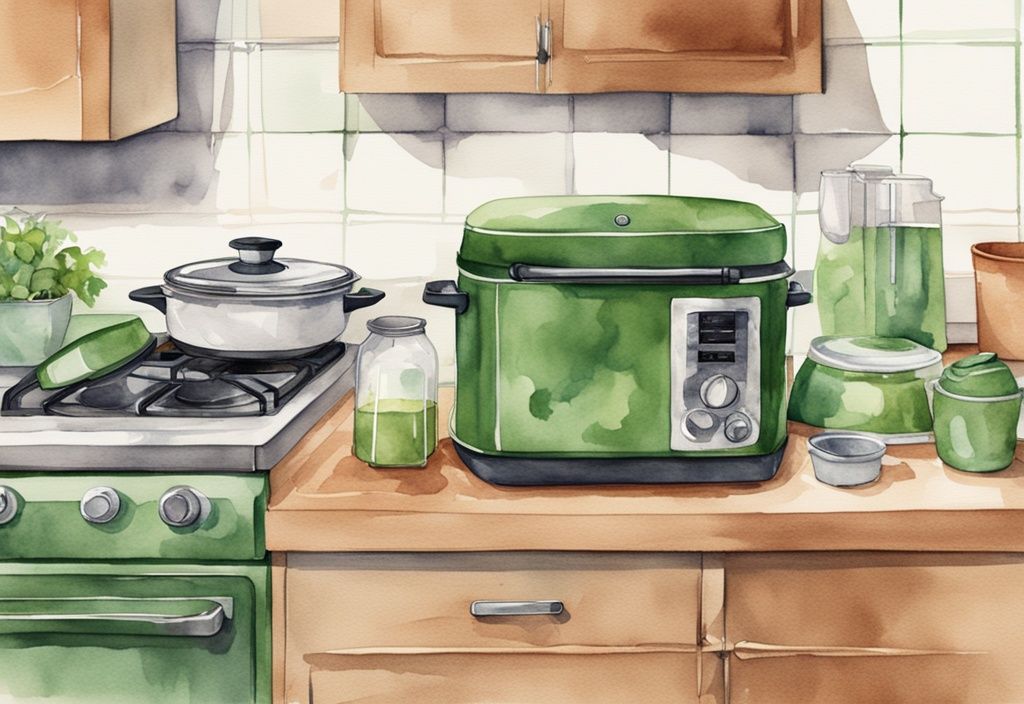

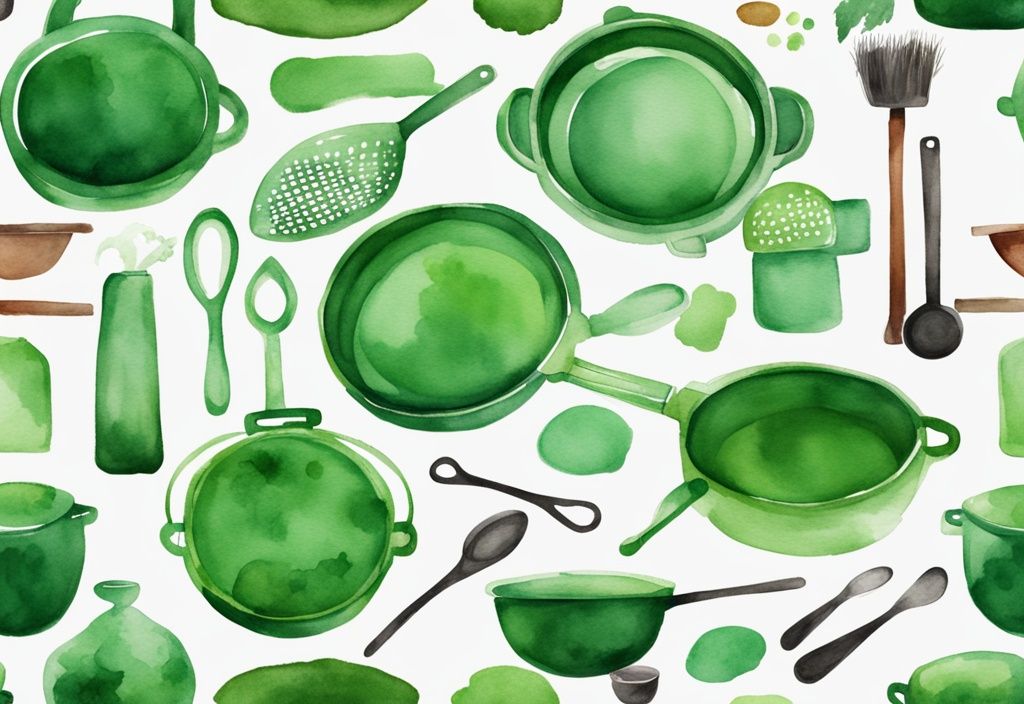
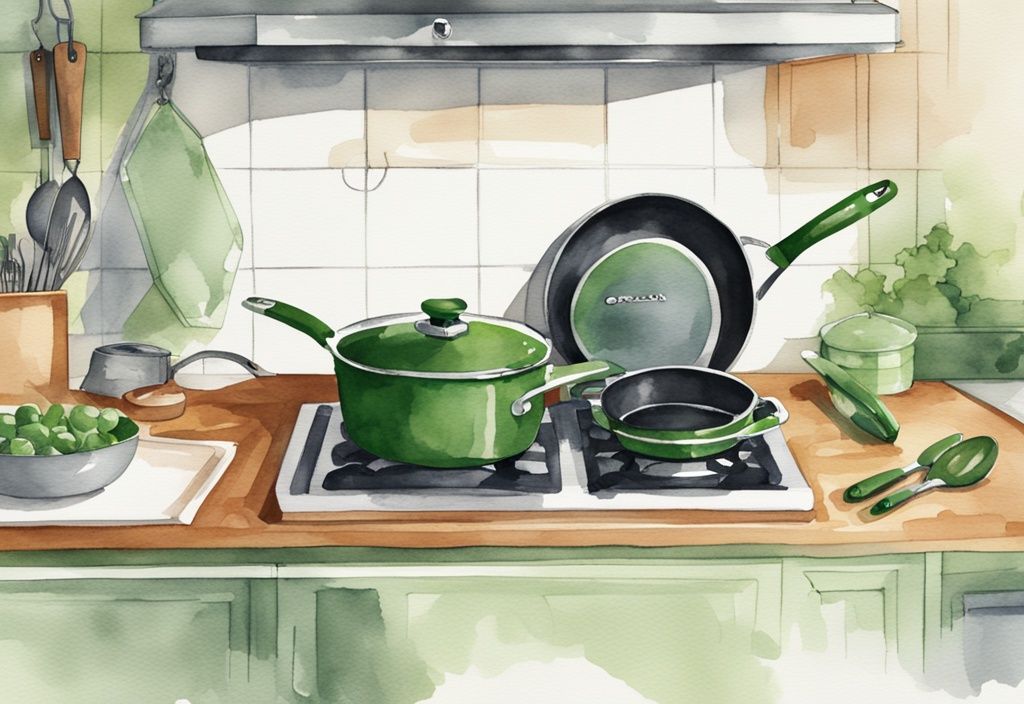
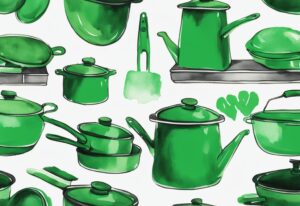









Post Comment